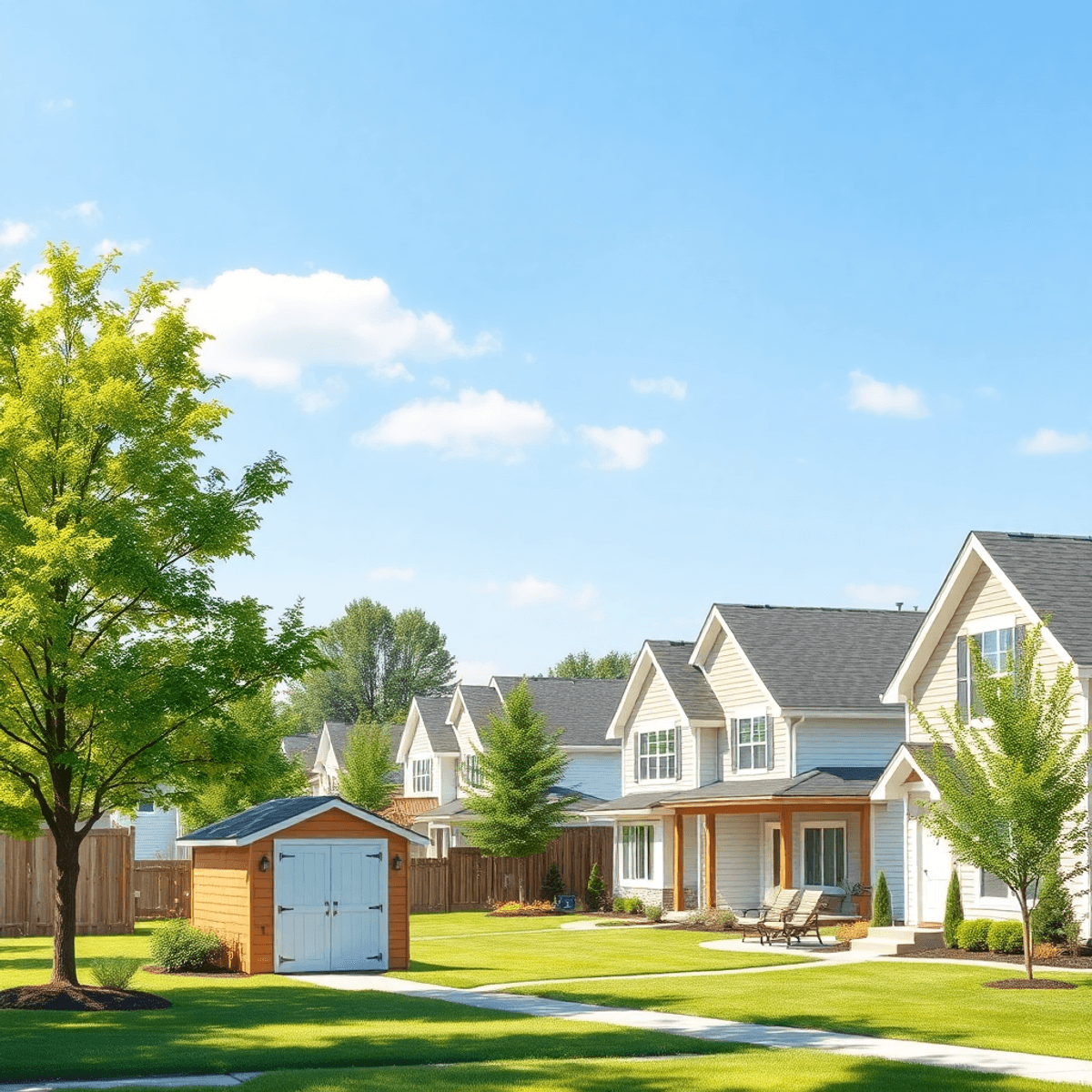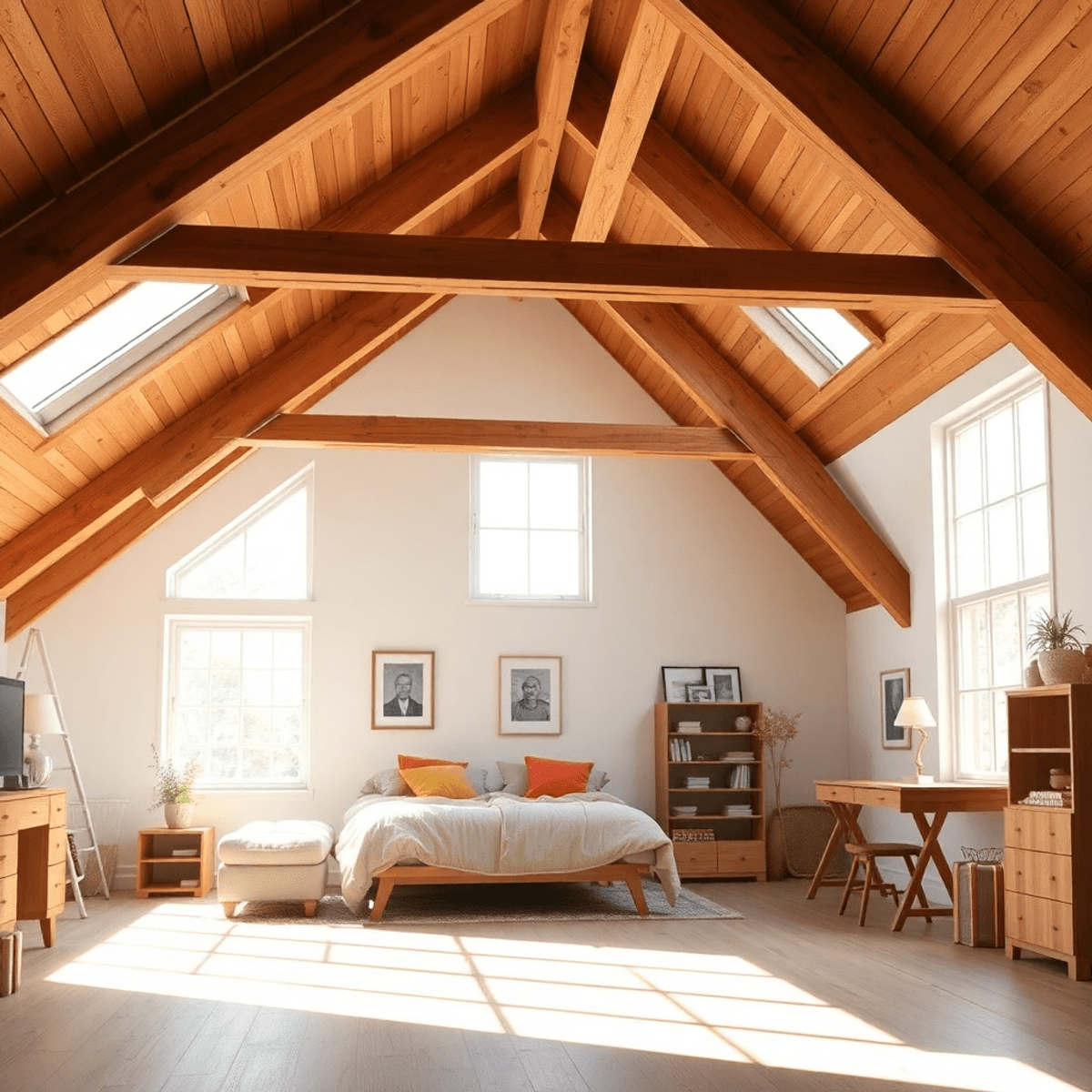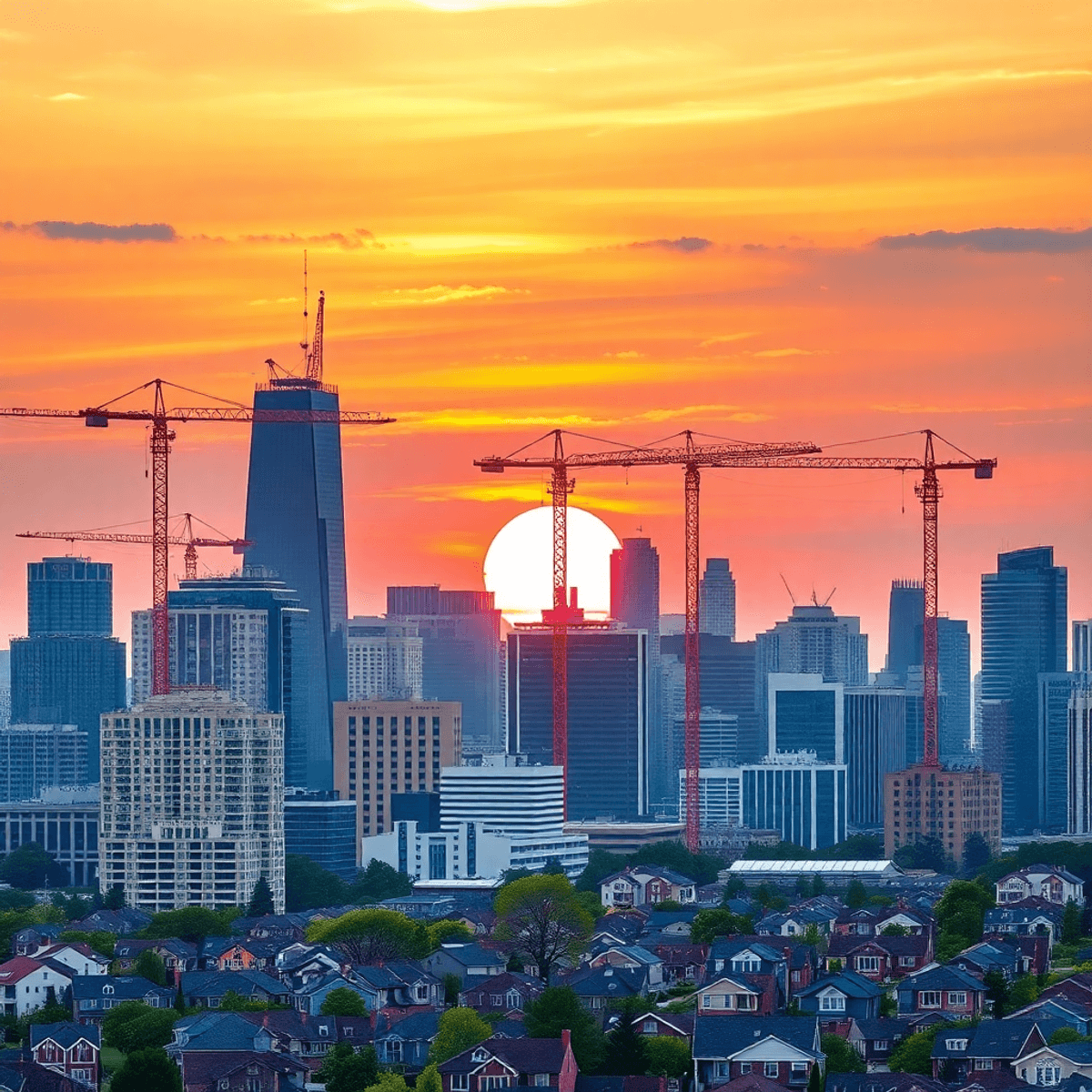Introduction
Eco-Friendly Remodeling: Sustainable Upgrades for a Greener Home is an approach that focuses on integrating environmentally responsible practices into home renovations. This process, known as eco-friendly remodeling, involves selecting materials and methods that minimize environmental impact while enhancing the home’s efficiency and value.
The importance of sustainable upgrades cannot be overstated. They play a crucial role in reducing energy consumption, conserving water resources, and improving indoor air quality. By opting for these upgrades, homeowners not only contribute to environmental conservation but also enjoy enhanced comfort and reduced utility costs.
Several benefits for homeowners and the environment make eco-friendly remodeling an appealing choice:
- Reduced Carbon Footprint: Utilizing sustainable materials and energy-efficient systems significantly decreases emissions.
- Cost Savings: Energy-efficient homes lead to lower utility bills and potential tax incentives.
- Enhanced Property Value: Green homes are increasingly desirable in the real estate market, often commanding higher resale values.
Embracing these sustainable practices is a step towards creating a healthier living space and a greener planet.
1. Sustainable Materials
Integrating sustainable materials into home renovations offers numerous advantages for both homeowners and the environment. Using eco-friendly building materials like reclaimed wood, bamboo, and recycled metals ensures a more sustainable approach to remodeling.
The adoption of these materials significantly lowers the carbon footprint associated with traditional construction methods. By choosing sustainable options, homeowners can contribute to reducing emissions and promoting environmental health, setting the stage for further eco-friendly upgrades in their homes.
Benefits of Sustainable Materials
Here are some benefits of using sustainable materials in home renovations:
- Reclaimed Wood: Sourced from old buildings or salvaged structures, reclaimed wood not only reduces the demand for new timber but also gives homes a unique, rustic charm.
- Bamboo: Known for its rapid growth and renewability, bamboo is an ideal alternative to traditional hardwoods. It is durable, versatile, and contributes less to deforestation.
- Recycled Metals: Utilizing metals that have been repurposed from previous uses helps in minimizing mining activities and conserving natural resources.
2. Energy Efficiency
Improving energy efficiency in homes is a key part of eco-friendly remodeling. It not only helps the environment but also saves homeowners money. Upgrading to energy-efficient features is a smart choice for both sustainability and finances.
1. Solar Panels
Using solar panels to convert sunlight into electricity is one of the most effective ways to reduce energy consumption and reliance on fossil fuels. This renewable energy source offers long-term savings on utility bills while also decreasing a home’s carbon footprint.
2. Energy-Efficient Windows
Upgrading to energy-efficient windows helps maintain indoor temperature by reducing heat transfer. This leads to less dependency on heating and cooling systems, lowering energy consumption and costs.
3. LED Lighting
Replacing conventional bulbs with LED lighting is a simple yet impactful upgrade. LEDs use substantially less energy and have a much longer lifespan than traditional lighting options.
Investing in these energy-efficient upgrades enhances home comfort while supporting environmental sustainability. Homeowners benefit from reduced utility expenses and contribute positively to the planet’s health by minimizing their household’s carbon emissions.
3. Water Conservation Techniques for Eco-Friendly Remodeling Projects
Water conservation methods in home renovations are crucial for creating a sustainable living environment. With increasing water scarcity issues worldwide, integrating water-saving technologies into home improvement projects not only reduces environmental impact but also contributes to long-term utility savings.
Key water-saving installations include:
- Low-flow fixtures: These fixtures, such as faucets, showerheads, and toilets, significantly reduce water usage without compromising performance. By limiting the flow rate, they ensure efficient use of water resources.
- Rainwater harvesting systems: These systems collect and store rainwater from roofs for non-potable uses like irrigation and flushing toilets. This reduces dependence on municipal water supplies and conserves valuable resources.
- Greywater recycling systems: Greywater systems reuse wastewater from baths, sinks, washing machines, and other household appliances for landscape irrigation or toilet flushing. This innovative approach minimizes freshwater consumption and lessens the burden on sewage treatment facilities.
Implementing these techniques as part of an eco-friendly remodeling strategy not only supports environmental sustainability but enhances the functionality of homes. These upgrades make significant strides toward reducing water wastage while promoting responsible resource management.
4. Enhancing Indoor Air Quality Through Eco-Friendly Remodeling Practices
Remodeling can significantly impact indoor air quality, often releasing harmful pollutants and allergens into the environment. This makes improving indoor air quality during renovations a crucial consideration for homeowners. To mitigate these effects, adopting eco-friendly practices is essential.
1. Choose Low-VOC Paints
One of the most straightforward solutions is choosing low-VOC (volatile organic compounds) paints. These paints emit fewer chemicals compared to traditional options, reducing indoor pollution and contributing to a healthier living space.
2. Embrace Natural Ventilation Strategies
Embracing natural ventilation strategies can also play a pivotal role in maintaining good air quality. This includes designing spaces with ample windows and vents to ensure a regular flow of fresh air, thereby diluting indoor contaminants.
3. Introduce Air-Purifying Plants
Introducing air-purifying plants is another effective way to enhance air quality. Plants such as snake plants, peace lilies, and spider plants naturally filter toxins from the air, acting as organic purifiers.
Implementing these solutions not only supports cleaner indoor environments but also contributes to the overall well-being of occupants. Prioritizing air quality in remodeling projects aligns with sustainable living goals while fostering healthier homes.
5. Financial Benefits and Incentives for Sustainable Home Upgrades
Eco-friendly remodeling projects present a compelling financial proposition for homeowners. The cost advantages of eco-friendly remodeling projects are numerous, starting with significant reductions in utility bills. By incorporating energy-efficient technologies like solar panels and LED lighting, homeowners can witness a substantial decrease in monthly energy expenses.
Sustainable renovations also play a crucial role in enhancing property value. Homes that feature eco-friendly upgrades often stand out in the real estate market due to their enhanced efficiency and reduced environmental impact. This appeal not only attracts environmentally-conscious buyers but also potentially increases resale value.
Incentives and tax credits further sweeten the deal for those committing to sustainable home improvements. Many governments offer financial incentives to encourage energy-efficient upgrades, such as rebates for installing solar energy systems or tax deductions for using environmentally friendly materials. These incentives reduce the initial investment cost, making sustainable upgrades more accessible.
By leveraging these financial benefits, homeowners not only contribute positively to the environment but also enjoy increased property value and reduced long-term costs. This blend of immediate savings and long-term gains positions eco-friendly remodeling as a financially strategic choice.
6. Green Certifications: Validating Sustainability Efforts in Home Design Projects
Green certifications serve as a benchmark for eco-friendly remodeling, providing validation and credibility to sustainable home design efforts. These certifications, such as GreenPoint Rated, LEED (Leadership in Energy and Environmental Design), and ENERGY STAR, offer homeowners a structured pathway to ensure their renovations meet high environmental standards.
Benefits of Green Certifications
- Recognition and Trust: Homeowners can demonstrate their commitment to sustainability. This recognition often increases property value and market appeal.
- Guidance: Certification programs provide guidelines that help homeowners make informed decisions about materials, energy use, and waste management.
Promoting Sustainable Practices
Certifications play a crucial role in promoting sustainable practices by:
- Encouraging the use of sustainable materials, energy-efficient systems, and water-saving technologies.
- Providing an incentive for homeowners to adopt eco-friendly remodeling strategies that have long-term benefits for both the environment and personal well-being.
Incorporating these certifications into your renovation projects not only aligns with the ethos of Eco-Friendly Remodeling: Sustainable Upgrades for a Greener Home, but also assures that your home meets rigorous sustainability standards. The pursuit of green certifications signifies a dedication to environmental stewardship while enhancing the quality and efficiency of living spaces.
7. Financing Options to Make Sustainable Home Improvements Accessible to All
Financing solutions for eco-friendly renovations are crucial in enabling homeowners to embrace sustainability without financial strain. With the increasing demand for sustainable homes, various financing options have emerged, making it more feasible for individuals to implement eco-friendly upgrades.
1. Green Loans
Specialized loans designed specifically for energy-efficient improvements. These loans often offer lower interest rates and favorable terms compared to traditional financing options.
2. Home Equity Loans
By leveraging home equity, homeowners can access funds for substantial renovations. This financing method can be advantageous due to potentially lower interest rates than unsecured loans.
3. Energy-Efficient Mortgages (EEMs)
Allow buyers or homeowners to finance cost-effective, energy-saving measures as part of their mortgage. EEMs recognize the potential savings from reduced utility bills, providing additional borrowing power.
4. Government Grants and Rebates
Many governments offer incentives in the form of grants or rebates to support sustainable home improvements. These programs can significantly offset initial costs, encouraging widespread adoption of green practices.
Making eco-friendly upgrades financially feasible ensures that sustainability is accessible to a broader audience. By utilizing these diverse financing options, homeowners can invest in a greener future without compromising their financial stability. This accessibility is pivotal in fostering an inclusive transition towards environmentally responsible living.
8. Waste Reduction Strategies During Eco-Friendly Remodeling Projects
Minimizing waste generation during renovations plays a crucial role in eco-friendly remodeling. Construction and demolition activities account for a significant portion of waste production globally, making it imperative to adopt sustainable practices that reduce environmental impact.
Strategies for Minimizing Waste:
- Reusing Existing Materials: One effective approach is the reuse of existing materials. Salvaging and repurposing components such as doors, windows, fixtures, and cabinetry not only reduces waste but also preserves the original character of a home. For instance, reclaimed wood can be transformed into stunning flooring or feature walls.
- Sourcing Local Products: By choosing locally sourced materials, transportation emissions are reduced significantly. This practice supports local economies and ensures that the materials have a smaller carbon footprint compared to those shipped from distant locations.
- Deconstruction Over Demolition: Opting for deconstruction rather than traditional demolition allows for the careful dismantling of structures so that materials can be reused or recycled. This method keeps valuable resources out of landfills and provides opportunities to donate usable items to charities or resale organizations.
- Composting and Recycling: Implementing composting for biodegradable materials and recycling non-biodegradable components like metals and plastics contributes to an overall reduction in landfill waste.
These strategies not only benefit the environment by decreasing landfill contributions but also foster innovative design solutions that utilize available resources effectively.
9. The Long-Term Impact of Eco-Friendly Remodeling on the Environment and Well-being
Eco-friendly remodeling offers numerous benefits for both the environment and homeowners. By focusing on sustainable upgrades, homes can significantly reduce their carbon footprint. The use of renewable materials like bamboo or recycled metals, along with energy-efficient installations such as solar panels, minimizes reliance on non-renewable resources and decreases greenhouse gas emissions.
The impact extends beyond environmental considerations to enhance personal well-being. A remodeled space designed with sustainability in mind can offer improved indoor air quality through low-VOC paints and natural ventilation. This creates a healthier living environment, reducing risks associated with poor air quality such as allergies and respiratory issues.
Additionally, sustainable home upgrades can lead to increased comfort. Energy-efficient windows maintain optimal indoor temperatures, while LED lighting provides consistent illumination without excessive heat production. These elements contribute to a more pleasant and comfortable living space.
Incorporating eco-friendly practices into remodeling not only supports environmental health but also fosters a sense of well-being for occupants. By choosing sustainable options, homeowners invest in a greener future, benefiting both themselves and the planet.
Conclusion: Embracing an Eco-Friendly Future Through Sustainable Home Design Choices
Adopting Eco-Friendly Remodeling strategies is crucial for a sustainable future. Homeowners are encouraged to integrate sustainable practices into their renovation projects, ensuring energy efficiency, water conservation, and improved indoor air quality. These efforts not only reduce environmental impact but also enhance the overall value and comfort of homes.
Call to action for homeowners: Consider eco-friendly remodeling initiatives as a pathway to contribute positively to the environment while enjoying long-term economic benefits. Prioritize materials and techniques that promote sustainability in every aspect of home design.
Embrace Sustainable Upgrades for a Greener Home by making informed choices that reflect a commitment to both your living space and the planet. Taking these steps will ensure a healthier, more sustainable future for generations to come.
10 Comments
Leave A Comment
You must be logged in to post a comment.





[…] overall energy consumption in Illinois communities. Furthermore, it aligns with the principles of eco-friendly remodeling, promoting sustainable upgrades for a greener […]
[…] not only elevate the beauty of your home but also enhance its value. Moreover, embracing eco-friendly remodeling practices can lead to sustainable upgrades for a greener home. Working with Local Illinois […]
[…] sustainable and cost-effective living environment. For more comprehensive strategies, including eco-friendly remodeling options that further enhance sustainability, consider consulting with experts in the […]
[…] these steps are essential for any remodeling project, incorporating eco-friendly remodeling practices can significantly enhance the overall value and sustainability of the renovated space. By […]
[…] [investing in eco-friendly remodeling](https://illinoisrdn.com/eco-friendly-remodeling-sustainable-upgrades-for-a-greener-home) options during your exterior painting project not only enhances aesthetics and longevity but also […]
[…] integrating eco-friendly remodeling practices into your sunroom design can not only enhance its appeal but also contribute to a more […]
[…] instance, implementing eco-friendly remodeling and sustainable upgrades can significantly reduce your carbon footprint while enhancing the overall efficiency of your […]
[…] these investments not only profitable but also environmentally responsible. This includes embracing eco-friendly remodeling practices that ensure a greener […]
[…] you’re interested in making sustainable choices during your renovation, consider looking into eco-friendly remodeling options which can lead to greener home […]
[…] light of current environmental concerns, homeowners might also want to consider eco-friendly remodeling options. These sustainable upgrades not only help reduce the carbon footprint but can also lead to […]